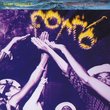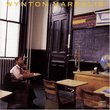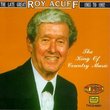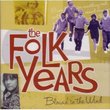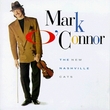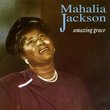| All Artists: Original Dixieland Jazz Band Title: Complete Original Dixieland Jazz Band (1917-1936) Members Wishing: 3 Total Copies: 0 Label: RCA Original Release Date: 4/25/1995 Release Date: 4/25/1995 Genres: Jazz, Pop Styles: New Orleans Jazz, Traditional Jazz & Ragtime, Dixieland Number of Discs: 2 SwapaCD Credits: 2 UPC: 078636660820 |
Search - Original Dixieland Jazz Band :: Complete Original Dixieland Jazz Band (1917-1936)
 | Original Dixieland Jazz Band Complete Original Dixieland Jazz Band (1917-1936) Genres: Jazz, Pop
One of the painful ironies of American musical history is that the first jazz band ever to record was the Original Dixieland Jazz Band, a quintet of white New Orleans musicians who had moved north to Chicago in 1916 and be... more » |
Larger Image |
CD DetailsSynopsis
Amazon.com One of the painful ironies of American musical history is that the first jazz band ever to record was the Original Dixieland Jazz Band, a quintet of white New Orleans musicians who had moved north to Chicago in 1916 and began recording in New York a year later. More painful still, their first recordings to be released, "Livery Stable Blues" and "Original Dixieland One-Step," would launch a national jazz craze and a host of imitators, with the fad passing before any of the great African American New Orleans musicians--Kid Ory, Sidney Bechet, Jelly Roll Morton, King Oliver, Louis Armstrong--first entered recording studios. However, while the ODJB lacked the art and inventiveness of Morton or Oliver, it had enough spontaneous energy and high spirits to explode on an unsuspecting public conditioned to staid popular music and relatively formal ragtime. While none of the musicians seems to have arrived at the improvised solo, the tracks are filled with characteristic New Orleans ensemble variations, with clarinetist Larry Shields coiling around Nick LaRocca's punching cornet lead work, and trombonist Eddie Edwards providing tailgate effects. While the quality of early recording would lose some of pianist Henry Ragas's work, drummer Tony Sbarbaro contributes what percussion effect acoustic recording could support. Tunes like "Tiger Rag" and "Clarinet Marmalade" would become bulwarks of the traditional jazz repertoire. This complete edition of the band's work contains all the band's influential recordings from 1917 to 1921 and 14 tracks from their reunion in 1936 in the midst of the swing era, both in small- and big-band formats. Those seeking just the significant material from the band's early years can find it on a single CD, The 75th Anniversary. --Stuart Broomer Similarly Requested CDs
|
CD ReviewsThe Roots Revisited Peter Acebal | Christiansburg, VA United States | 12/27/2001 (5 out of 5 stars) "The Original Dixieland Jazz Band (ODJB)carry the distinction of being the First Jazz band to record in early 1917;I Had most of these sides on vinyl import Lp and the digital restoration on this set is superb,-what may present a slight problem for inexperienced ears are the whiplash tempos the ODJB employed in their 1917-1918 recordings (Jazz was thought to be a 'Novelty' at the time - chalk up another one for A & R folks); my only quibble is that The ODJB's 1919-1920 records for UK Columbia could not appear here (due no doubt to label conflicts) nor the bands superb 1917 Aeolian cylinders;but this is a minor quibble at the most.Anyone with any habit of even saying the word "Jazz" cannot bypass this critical body of music,and kudos are due to Amazon for making this tremendous collection easily available to all.Thanks!" Historic and imortant jass me@me.com | 08/29/2000 (5 out of 5 stars) "Since this was the 1st jass band to record these, side are historic and fun, especially the livery stable blues, and jazz me blues. This music is not as good as it would become with Louis Armstrong, King Oliver, and Jelly Roll Morton, however it is still historic and essential music for Dixieland fans. For a great new Dixieland band try The Wooden Nickel Jass Band which plays many Dixieland jazz festival today, they have a great vocalist Brady McKay check them out at wnjb.com" The first, but hardly the most original madamemusico | Cincinnati, Ohio USA | 08/05/2006 (3 out of 5 stars) "Ahh, the ODJB. The cornerstone of recorded jazz, and still controversial a century after they first recorded.
When I first heard them, in 1967, they thrilled me with their unbridled energy and pulsating rhythm. But the LP I had also included six tracks recorded in 1936, and these were the ones that I liked the most. Larry Shields' clarinet took real solos, not just weaving around the comet lead, and Nick LaRocca's comet was more varied in what it played, even inserting Bix-like upward rips in the final chorus of "Tiger Rag." Nothing this good was evident on the 1917-1918 recordings. On those, the band just played peppy ragtime with no variation to speak of. The discs were exciting on first listening, but then fairly monotonous on rehearing. The problem with the ODJB being the first jazz band on records was not that they were white, but that they simply weren't good soloists. Since no one in New York had even HEARD jazz at the time they debuted, they went crazy over them. Had players like Paul Mares, Leon Roppolo, Gus Mueller or Emmet Hardy, who were also white, come to New York at that time, I am sure the ODJB would have been considered a peppy novelty dance band and nothing else, for that is in essence what they were. When the ODJB returned from England in 1921, they were forced to use a saxophone and play in a more commercial style, not just because of the influence of Art Hickman and Paul Whiteman, but because by that time people were getting used to the much hotter styles of Mamie Smith and her Jazz Hounds and pianist James P. Johnson. But I still love those 1936 sides; to me, they represent the best that this band had to offer. " |

 Track Listings (18) - Disc #1
Track Listings (18) - Disc #1